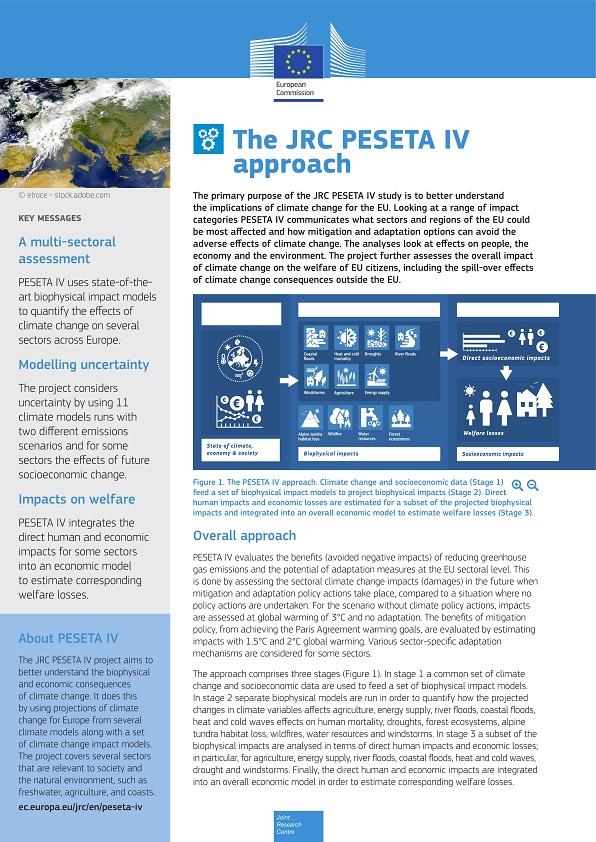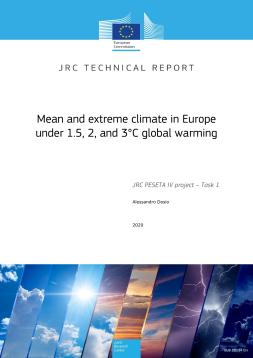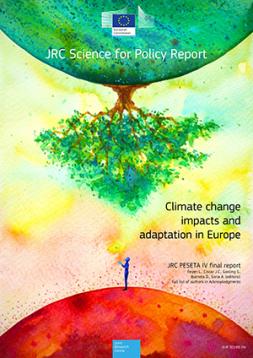
Overall Approach
PESETA IV involves three main stages:
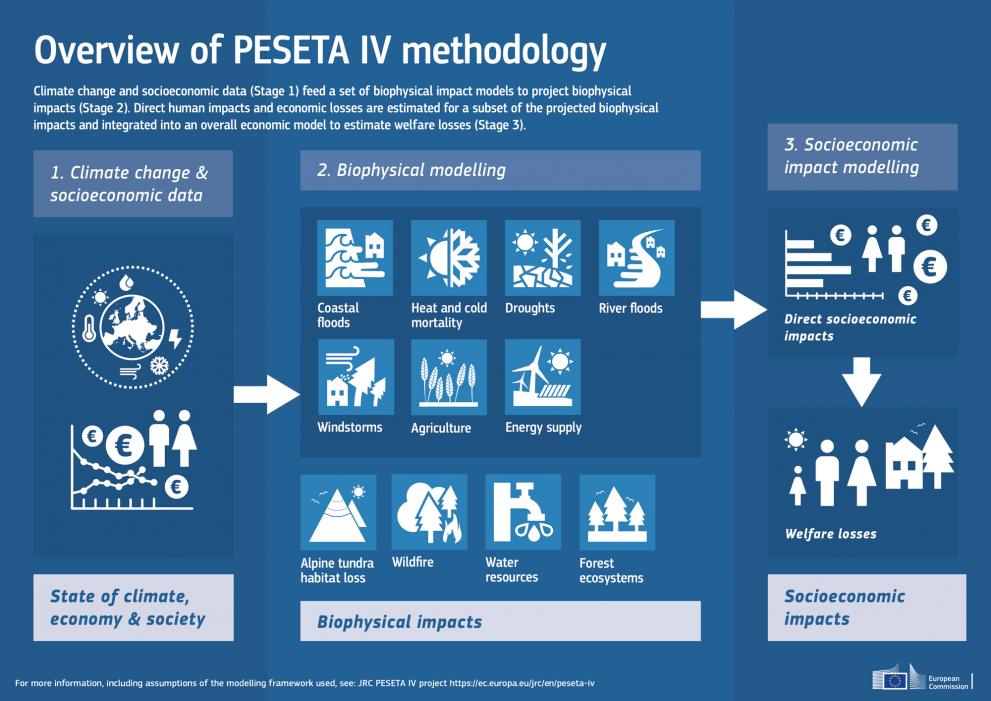
Figure: Overview of the PESETA IV methodology.
Stage 1: a common set of climate change and socioeconomic data are used to feed a set of biophysical impact models.
Stage 2: separate biophysical models are run in order to quantify how the projected changes in climate variables affects agricultural crop yields, energy supply, river floods, coastal floods, heat and cold waves, drought, habitat suitability, forest fires, forest ecosystems, water resources and windstorms.
Stage 3: a subset of the biophysical impacts are analysed in terms of direct human impacts and economic losses; in particular, for agriculture, energy supply, river floods, coastal floods, heat and cold waves, drought and windstorms. Finally, the direct human and economic impacts are integrated into an overall economic model in order to estimate corresponding welfare losses.
Climate Scenarios
PESETA IV evaluates the effects of greenhouse gas mitigation by estimating climate impacts for the Paris targets (1.5°C and 2°C warming relative to pre-industrial) and a higher warming level (3°C). The climate projections are from an ensemble of 11 climate models that took part in a large, on-going climate model inter-comparison project called Coordinated Regional-climate Downscaling Experiment over Europe (EURO-CORDEX). The climate models used are known as regional climate models (RCMs), which mean that they produce climate projections on a grid across Europe at a resolution of around 12.5 km.
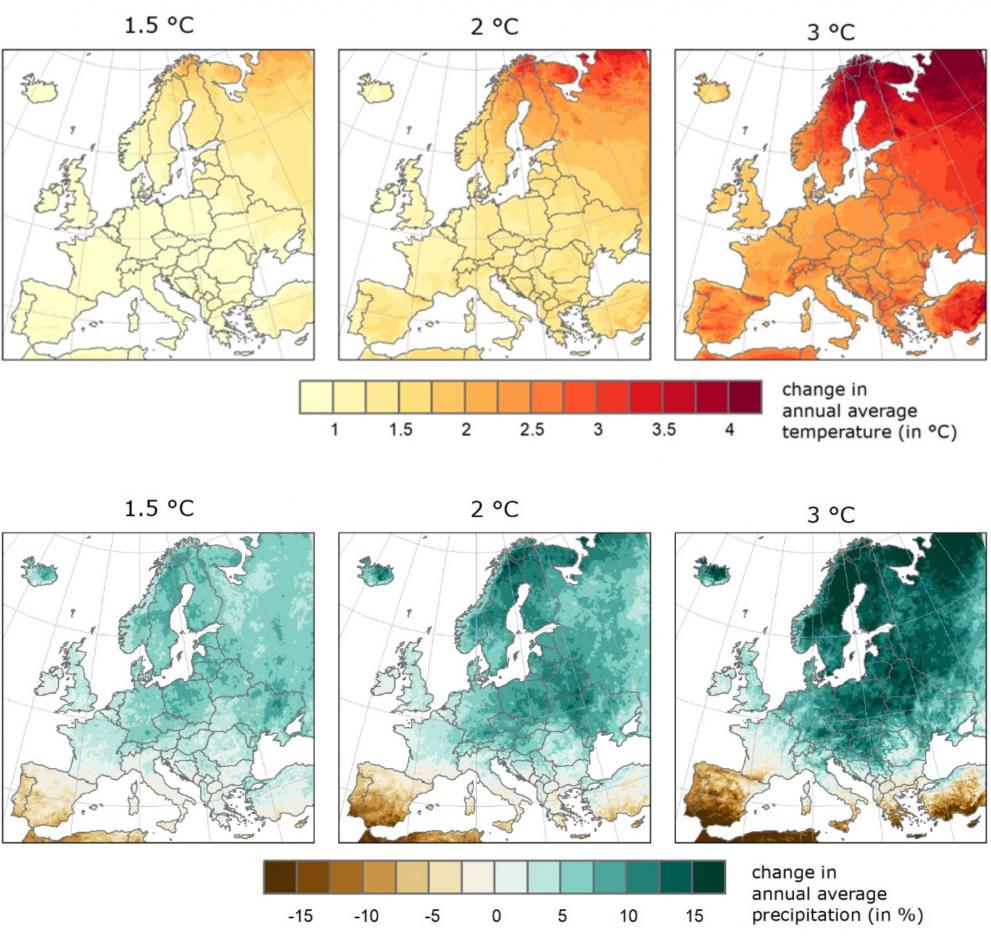
Figure: Changes from present (1981-2010) in annual average temperature (top panels) and precipitation (bottom) for the three global warming scenarios used in PESETA IV: 1.5, 2 and 3°C warmer than pre-industrial times. Note that global annual average temperature is now around 1°C higher compared to preindustrial times.Click to enlarge
Socioeconomic Scenarios
PESETA IV assesses socioeconomic impacts of global warming within a specific setting of the state of the economy.: either the economy as of today (known as a ‘static’ approach), or the economy of the future (‘dynamic’ approach). The static approach portrays how global warming and climate change would impact today’s population and economy. The dynamic assessment evaluates how climate at the different global warming levels would impact EU society as projected for 2050 and 2100 according the ECFIN Ageing Report projections of population and economy (European Commission, 2014). As a 3°C warming scenario is unlikely to occur by mid-century, only the Paris targets are considered in 2050, while in 2100 the three warming levels are considered.
European Commission (2014). The 2015 Ageing Report. Underlying Assumptions and Projection Methodologies. EUROPEAN ECONOMY 8/2014.
Summary Card
